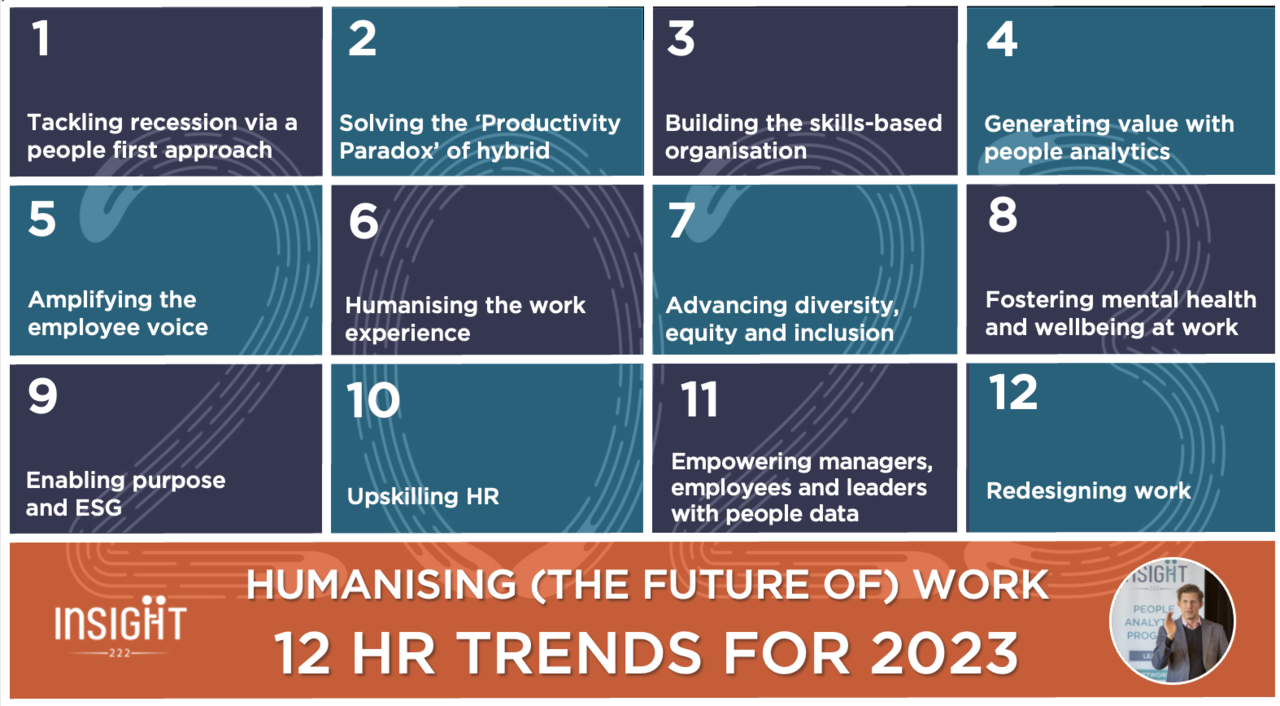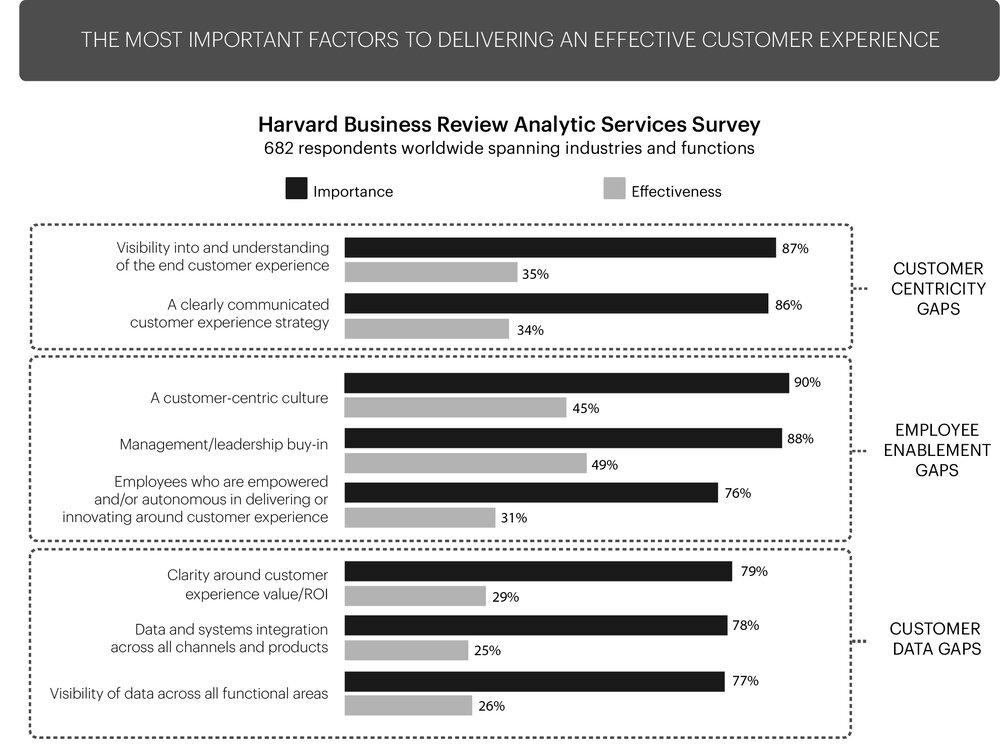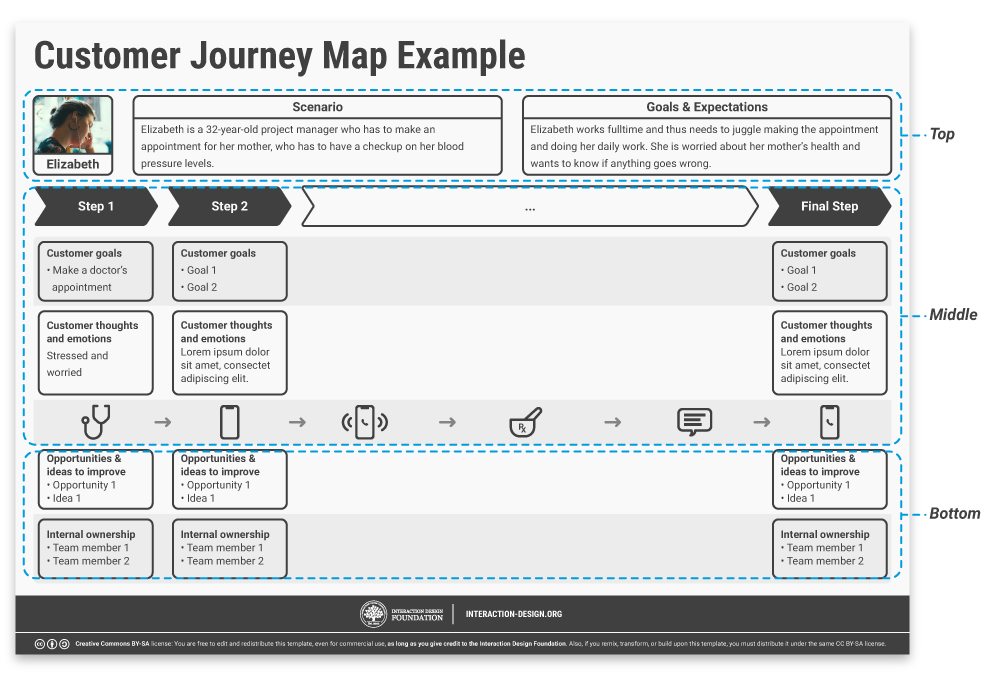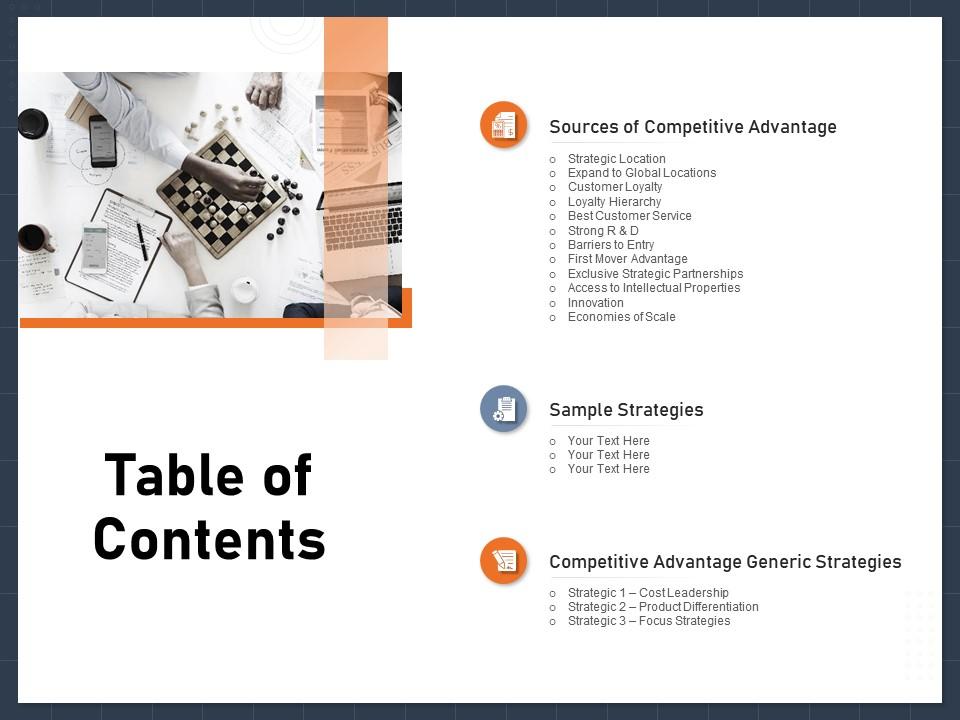Breaking Barriers: Achieving Customer Centricity in 2024

In 2024, businesses need to focus on breaking barriers and achieving customer centricity in order to thrive.
With so much competition in the market, companies that prioritize their customers' needs are more likely to succeed.
By putting the customer at the center of everything they do, businesses can create a loyal base and increase profitability.
Quick Summary
- Customer centricity requires a cultural shift: It's not just about implementing new processes, it's about changing the way people think and work.
- Data is key: Without data, it's impossible to truly understand your customers and their needs.
- Leadership buy-in is crucial: Without support from the top, customer centricity initiatives are likely to fail.
- It's not a one-time project: Customer centricity requires ongoing effort and continuous improvement.
- It's not just about the customer: Employee engagement and satisfaction are also important factors in achieving customer centricity.
The Importance Of Customer Centricity In Todays Business Landscape

Customer Centricity: The Key to Success in Today's Business Landscape
Putting customers at the center stage of operations and decision-making processes is vital for success in today's business landscape.
Customer centricity refers to meeting their needs, wants, preferences, and desires with products or services that align with their expectations.
Customer-centric companies attract loyal buyers who trust them to provide excellent service by providing outstanding experiences for new clients while retaining existing ones through personalized engagements.
Why is it important?
- Focusing on customers boosts revenue
- Retaining happy customers saves more money than acquiring new ones
- Understanding your market allows informed decisions
- Satisfied clients increase conversion rates and referral marketing
Customer centricity is not just a buzzword, it's a business strategy that can make or break a company's success.
By prioritizing the needs and desires of customers, businesses can create a competitive advantage that sets them apart from their competitors.
This approach leads to increased customer loyalty, higher retention rates, and ultimately, increased revenue.
Customer centricity requires a shift in mindset and a commitment to ongoing improvement.
It's not enough to simply say that the customer is the top priority.
Companies must actively seek out feedback, analyze data, and make changes to their products and services based on customer needs and preferences.
Analogy To Help You Understand
Customer centricity is like a game of Jenga.
Just like in Jenga, where each block is carefully placed on top of the other to create a stable tower, customer centricity requires a strong foundation of customer understanding and empathy. However, just as in Jenga, removing one block can cause the entire tower to come crashing down. Barriers to customer centricity are like the blocks in Jenga. Each barrier, whether it be a lack of data, siloed departments, or a focus on short-term profits, weakens the foundation of customer centricity. Over time, these barriers can cause the tower to become unstable and eventually collapse. But just as in Jenga, removing the right blocks can actually strengthen the tower. By identifying and removing barriers to customer centricity, organizations can create a stronger foundation for customer satisfaction and loyalty. Ultimately, just as in Jenga, the key to success in customer centricity is to carefully and strategically remove barriers without causing the entire tower to come crashing down.Examples Of Companies That Have Successfully Embraced Customer Centricity

Companies That Excel at Customer Centricity:
Apple: Renowned for its customer-centric approach
Designs products and services that cater to customers' needs.
Genius Bar provides exceptional customer service by addressing any product-related issues.
Example of me using AtOnce's customer service software to answer messages faster with AI:
Amazon: Prioritizes personalized experiences using data analytics and machine learning algorithms.
Focuses on convenience, enabling users to find what they need quickly.
Provides excellent support when problems arise.
Zappos: Offers outstanding support throughout the shopping experience, from start to finish.
Disney: Creates immersive experiences tailored explicitly towards families.
Heavy emphasis on personalization.
Customer centricity is not just about providing excellent customer service.It's about designing products and services that cater to customers' needs and providing personalized experiences that exceed their expectations.
Companies that excel at customer centricity prioritize the customer experience at every touchpoint.
They use data analytics and machine learning algorithms to personalize experiences and provide excellent support when problems arise.
By doing so, they create loyal customers who are more likely to recommend their products and services to others.
Customer centricity is not a one-time effort.It requires continuous improvement and a willingness to listen to customer feedback and adapt accordingly.
Companies that prioritize customer centricity understand that it's not just about making a sale.
Some Interesting Opinions
1. Customer feedback is overrated.
Only 1 in 26 unhappy customers complain, the rest just leave. Instead, focus on analyzing customer behavior data to improve their experience.2. Personalization is a waste of time and resources.
80% of customers prefer fast and efficient service over personalized experiences.
Invest in automation and speed instead.3. Customer loyalty is a myth.
Studies show that 91% of customers would switch to a competitor after a bad experience. Focus on providing exceptional service every time, not just to retain customers.4. Customer-centric companies are less profitable.
Research shows that companies that prioritize customer satisfaction over profits have lower stock returns. Focus on balancing customer needs with business goals.5. Customer service is not a priority.
Only 8% of customers say that customer service is the most important factor in their purchasing decision. Focus on product quality and innovation instead.Understanding The Barriers To Achieving True Customer Centricity

Barriers to Achieving True Customer Centricity
To succeed in modern business, companies must understand the barriers to achieving true customer centricity.
These obstacles include:
- A lack of clear vision and understanding of customer needs
- Inadequate technology solutions
- An absence of skilled resources
Insufficient Research Leads to Incorrect Assumptions
Many organizations fail to create a cohesive strategy for customer-centricity due to insufficient research.
This leads to incorrect assumptions about what customers want.
Without accurate insights into their expectations or behaviors throughout engagement stages - awareness through post-sales evaluation - it's difficult for any organization seeking true customer centricity.
Inadequate Technology Solutions
Inadequate technology solutions tailored towards enabling effective operations and experiences are another critical barrier.
Technology solutions must be tailored towards enabling effective operations and experiences.
Absence of Skilled Resources
Another barrier to achieving true customer centricity is the absence of skilled resources.
Companies must have the right people with the right skills to execute a customer-centric strategy.
Companies must have the right people with the right skills to execute a customer-centric strategy.
Developing A Clear Vision And Strategy For Your Organizations Customer Focus

Developing a Customer-Centric Strategy
To achieve true customer centricity, it's critical to develop a clear vision and strategy for your organization's customer focus
This requires strategic planning that aligns all aspects of the business with your customers' needs.
Understanding Your Customers
- Deeply understand who your customers are and what they value most
- Conduct market research, gather feedback from current customers, analyze data
- Use these insights to create buyer personas or profiles capturing their preferences, behaviors, and motivations
Developing a Comprehensive Plan
- Once you have an in-depth knowledge of your ideal customers’ wants and desires, develop a comprehensive plan outlining how best to reach them throughout the entire buying process
- Map out every touchpoint along the way where there may be gaps or opportunities for improvement
Key Elements for a Clear Vision & Strategy
A customer-centric strategy is a long-term investment in your business's success.
My Experience: The Real Problems
1. Customer centricity is a myth perpetuated by businesses to appear socially responsible.
According to a survey by Accenture, only 23% of customers feel that companies are doing a good job of tailoring experiences to their needs.2. The obsession with data is hindering true customer understanding.
A study by Forrester found that 74% of companies say they want to be data-driven, but only 29% are actually successful at connecting analytics to action.3. Companies are too focused on short-term profits to prioritize customer satisfaction.
A report by Temkin Group found that companies earning $1 billion annually can expect to earn, on average, an additional $700 million within 3 years of investing in customer experience.4. The rise of chatbots and AI is making customer service less human and less effective.
A study by PwC found that 59% of consumers feel companies have lost touch with the human element of customer experience due to the use of chatbots and AI.5. Companies are not willing to invest in the necessary resources to truly become customer-centric.
A survey by Gartner found that only 14% of companies have a dedicated budget for customer experience initiatives, despite 89% of companies expecting to compete mainly on customer experience by 2023.Building A Culture That Prioritizes Customers Above All Else

Building a Customer-Centric Culture
Creating a customer-centric culture is an ongoing challenge that requires buy-in from all members, including leadership, and consistent reinforcement of behaviors across teams.
To achieve this, it's important to first define what it means to be customer-centric and align with values.
Defining Customer-Centric
Being customer-centric means putting the customer at the center of everything you do.
It's about understanding their needs, wants, and pain points and using that information to create a better experience for them.
Creating Actionable Steps
To put customers first, it's important to hire empathetic individuals who understand human behavior.
Encourage feedback loops between clients/stakeholders to innovate based on insights.
Foster internal communication, ensure efficient department collaboration, measure success toward common goals, and be open-minded about outside ideas.
Investing In Employee Training And Development To Foster Empathy And Understanding

Why Investing in Employee Development Fosters Empathy
Investing in employee training and development is crucial for companies striving to become more customer-centric.
Understanding customers' needs enables employees to create solutions that better address their pain points.
To achieve this, prioritizing emotional intelligence (EI) training is essential.
EI helps people recognize emotions in themselves and others, leading to improved communication skills, conflict resolution abilities, and increased confidence when dealing with difficult situations.
Here are five reasons why investing in employee development fosters empathy:
- Empathetic employees lead by example
- Professional growth opportunities increase employee satisfaction
- Empathy generates consumer loyalty
Empathy is about finding echoes of another person in yourself.
- Mohsin Hamid
Companies can offer external programs like LinkedIn Learning or Udemy while also organizing internal workshops where staff members share best practices on using emotional intelligence at work.
Empathy is seeing with the eyes of another, listening with the ears of another, and feeling with the heart of another.
- Alfred Adler
Investing in employee development fosters empathy, which leads to better customer experiences and increased loyalty.
It's a win-win situation for both employees and customers.
My Personal Insights
As the founder of AtOnce, I have had my fair share of experiences with customer centricity. One particular incident stands out in my mind as a prime example of the barriers that can prevent companies from truly putting their customers first. A few years ago, I was working with a large e-commerce company that was struggling to keep up with customer inquiries. They had a team of customer service representatives, but they were constantly overwhelmed with the volume of requests coming in. As a result, customers were experiencing long wait times and frustration with the company's lack of responsiveness. When I suggested implementing AtOnce, the company was hesitant. They were worried that using an AI tool would make them seem impersonal and detached from their customers. However, I explained that AtOnce was designed to enhance the customer experience, not replace it. After some convincing, the company agreed to give AtOnce a try. The results were astounding. With AtOnce, the company was able to respond to customer inquiries in real-time, providing personalized and helpful responses that addressed their concerns. Customers were thrilled with the level of service they received, and the company saw a significant increase in customer satisfaction and loyalty. This experience taught me that the biggest barrier to customer centricity is often fear. Companies are afraid to try new things, to take risks, and to put their customers first. But by embracing innovative tools like AtOnce, companies can break down these barriers and create a truly customer-centric culture.Leveraging Data Analytics To Gain Insight Into Consumer Needs, Preferences, And Behaviors

Why Businesses Need Data Analytics
Businesses rely on data analytics to understand their customers.
Effective use of these tools uncovers insights into consumer needs, preferences, and behaviors.
This helps tailor offerings to meet customer requirements.
How to Leverage Data Analytics
To leverage data analytics successfully, follow these steps:
- Identify relevant sources such as social media or sales records
- Analyze information using regression analysis or trend spotting software for informed decision-making
Privacy Regulations and Big Data Usage
Privacy regulations govern user-generated content with big data usage.
It's important to comply with these regulations to protect customer data.
Utilizing AI-Powered Chatbots
Utilize AI-powered chatbots strategically to scale up customer service efforts.
This can help improve customer satisfaction and reduce response times.
Data analytics is the key to unlocking customer insights and improving business performance.
By leveraging data analytics, businesses can gain a competitive advantage and improve their bottom line.
It's important to stay up-to-date with the latest trends and technologies in this field to stay ahead of the competition.
Using Technology To Enhance The Customer Experience At Every Touchpoint

Increase Customer Satisfaction with Technology
In today's digital age, enhancing the customer experience at every touchpoint with technology is essential.
Businesses must leverage advancements like social media messaging apps and AI chatbots to exceed expectations.
Personalize Communication Channels
Personalizing communication channels using CRM software and data analytics tools can be effective by collecting information such as purchase history or interaction preferences.
You can use AtOnce's AI CRM software to prevent refunds, save hours on emails & avoid headaches:
This enables tailoring of communication based on individual needs for sending relevant product recommendations or personalized discounts via email/push notifications.
Other Ways to Enhance Customer Experience:
- Provide self-service options through website/mobile app
- Implement facial recognition technologies for faster checkouts & better security
- Use Live Chat support powered by AI bots that understand natural language processing
Remember, the key to enhancing customer experience is to make it easy and convenient for them to interact with your business.
By implementing these strategies, businesses can improve customer satisfaction and loyalty, leading to increased revenue and growth.
Redesigning Products, Services, And Processes With The Customer Top Of Mind

Redesigning for Customer Centricity in 2024
To achieve true customer centricity in 2024, it's essential to redesign products, services, and processes with the customer top of mind.
Every aspect of your business should revolve around their wants and needs.
With this mindset established, you can begin redesigning from the ground up.
Designing for Customers: Three Key Factors
When designing for customers, consider three key factors:
- Empathy Mapping: Identify pain points and challenges so solutions can be designed accordingly.
- Understanding Consumer Motivations: Consider both extrinsic (money or status) as well as intrinsic motivations when understanding what motivates them.
- Creating Features Based on Desires: Design features that align with customer desires and needs.
By focusing on these three factors, you can create products and services that truly resonate with your customers.
Design is not just what it looks like and feels like.
Design is how it works.
- Steve Jobs
Steve Jobs' quote emphasizes the importance of designing products and services that not only look good but also function well for the customer.
Implementing Metrics And Tools To Measure Success At Every Stage Of The Journey

How to Achieve Customer-Centricity in Your Business
To achieve customer-centricity in your business, it's crucial to implement metrics and tools that measure success at every stage of the journey.
This helps identify areas for improvement and those working well.
Identify Key Metrics
Start by identifying key metrics like:
- Customer satisfaction rates
- Repeat purchases
- Average order value
- Conversion rates
Track with Google Analytics or Salesforce
Use a tool like Google Analytics or Salesforce to track these metrics through the entire customer journey from acquisition to retention.
Pinpoint Issues and Make Proactive Changes
Pinpoint issues as they occur so you can make proactive changes based on data.
Remember, customer-centricity is all about putting the customer at the center of your business.By tracking key metrics and making proactive changes, you can create a better customer experience and drive business success
Building Strong Relationships With Customers Through Effective Communication Strategies
Building Strong Customer Relationships through Effective Communication Strategies
To achieve customer centricity, building strong relationships with customers is crucial.
Effective communication strategies play a vital role in this process.
However,effective communication goes beyond just talking to your customers; it involves actively listening and understanding their needs.
Being proactive in reaching out to your customers on a regular basis helps build strong relationships through effective communication strategies.
This can include sending personalized emails or messages that address specific concerns or interests they have expressed before.
Providing relevant information about products and services of interest also builds trust between you and the customer.
Effective communication goes beyond just talking to your customers; it involves actively listening and understanding their needs.
Businesses can use additional ways for effective communications such as:
- Encouraging open dialogue: Provide channels for feedback so clients feel heard
- Personalizing content/campaigns: Addressing people by name & creating tailored campaigns based on preferences.
Providing relevant information about products and services of interest also builds trust between you and the customer.
Ensuring Ongoing Adaptation And Improvement Through Continuous Learning
Why Continuous Learning is Essential for Customer Centricity
Continuous learning is essential for achieving customer centricity.
This requires openness to new ideas, trends, and emerging technologies that enhance the customer experience.
Companies must invest in employee training and development to ensure they have the necessary knowledge and skills.
How Regular Feedback Loops Promote Continuous Learning
Regular feedback loops are one way companies can promote continuous learning.
Gathering feedback from customers regularly provides an opportunity for growth rather than just reviewing past performance or making improvements without input from those who matter most – customers themselves!
Engaging with them ensures agility when changes arise by anticipating their needs before they articulate them.
- Offering employees access to industry conferences, webinars, podcasts where thought leaders share insights on topics such as customer service promotes ongoing education
The Importance of Employee Training and Development
Investing in employee training and development is crucial for companies to achieve customer centricity.
It ensures that employees have the necessary knowledge and skills to provide excellent customer service.
This, in turn, leads to increased customer satisfaction and loyalty.
Investing in employee training and development is crucial for companies to achieve customer centricity.
By providing ongoing education and training, companies can keep their employees up-to-date with the latest trends and technologies.
This helps them to better understand customer needs and provide personalized solutions.
Final Takeaways
As a founder of a company that specializes in AI writing and customer service, I have seen firsthand the importance of customer centricity. However, I have also seen the barriers that prevent companies from achieving it. One of the biggest barriers is a lack of understanding of the customer. Many companies think they know what their customers want, but they don't take the time to truly listen and understand their needs. Another barrier is a lack of communication between departments. Customer service may have a different understanding of the customer than marketing or sales, leading to a disjointed customer experience. Technology can also be a barrier to customer centricity. Many companies have outdated systems that don't allow for personalized experiences or efficient communication with customers. That's where AtOnce comes in. Our AI writing and customer service tool helps companies overcome these barriers by providing personalized, efficient communication with customers. Our AI writing tool can create content that speaks directly to the customer's needs, while our customer service tool can provide quick and accurate responses to their inquiries. By using AtOnce, companies can break down the barriers to customer centricity and provide a seamless, personalized experience for their customers. And as a founder, there's nothing more satisfying than seeing our technology help companies achieve their customer-centric goals.- Responds to emails, Facebook, Instagram, live chat, CRM, and everything else
- Answers all common questions instantly
- 24/7 availability
- Personalizes each response to your brand
- Saves you time and lets you focus on growth
Stop struggling with customer service – let AtOnce take care of it for you!
What is customer centricity?
Customer centricity is a business approach that focuses on creating a positive customer experience by putting the customer at the center of all business decisions and processes.
Why is customer centricity important?
Customer centricity is important because it helps businesses to build strong relationships with their customers, increase customer loyalty, and ultimately drive revenue growth.
What are some strategies for achieving customer centricity?
Some strategies for achieving customer centricity include gathering customer feedback, personalizing the customer experience, providing excellent customer service, and using data analytics to better understand customer needs and preferences.
